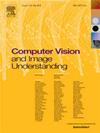Adaptive illumination and noise-free detail recovery via visual decomposition for low-light image enhancement
IF 3.5
3区 计算机科学
Q2 COMPUTER SCIENCE, ARTIFICIAL INTELLIGENCE
引用次数: 0
Abstract
Existing low-light image enhancement methods often struggle with precise brightness control and frequently introduce noise during the enhancement process. To address these limitations, we propose BVILLIE, a novel biologically inspired visual model. BVILLIE employs a visual decomposition network that separates low-light images into low-frequency and high-frequency components, with the low-frequency path focused on brightness management and the high-frequency path enhancing details without amplifying noise. In the low-frequency path, inspired by the biological visual system’s adaptive response to varying light conditions, BVILLIE incorporates a custom-designed luminance curve based on the Naka–Rushton equation. This equation models the nonlinear response of retinal neurons to light intensity, simulating human perceptual adaptation to different brightness levels. Additionally, a convolutional enhancement module corrects color shifts resulting from luminance adjustments. In the high-frequency path, an innovative fusion module integrates a preliminary denoiser with an adaptive enhancement mechanism to improve detail preservation and texture refinement. Extensive experiments across multiple benchmark datasets demonstrate that BVILLIE significantly outperforms state-of-the-art techniques. For instance, on the LOLv2-Real dataset, BVILLIE achieves a PSNR of 25.335 dB, SSIM of 0.866, LPIPS of 0.106, and LOE of 0.208. These results, consistently observed across various metrics, highlight BVILLIE’s superior performance in terms of image quality, perceptual similarity, preservation of lightness order, detail enhancement, and noise suppression.
自适应照明和无噪声的细节恢复通过视觉分解低光图像增强
现有的微光图像增强方法往往难以精确控制亮度,并且在增强过程中容易引入噪声。为了解决这些限制,我们提出了BVILLIE,一种新颖的受生物学启发的视觉模型。BVILLIE采用视觉分解网络,将弱光图像分离为低频和高频分量,低频路径专注于亮度管理,高频路径增强细节而不放大噪声。在低频路径上,受生物视觉系统对不同光照条件的自适应反应的启发,BVILLIE结合了基于Naka-Rushton方程的定制设计的亮度曲线。该方程模拟了视网膜神经元对光强度的非线性响应,模拟了人类对不同亮度水平的感知适应。此外,卷积增强模块校正由亮度调整引起的颜色偏移。在高频路径中,创新的融合模块集成了初始去噪和自适应增强机制,以提高细节保存和纹理细化。跨多个基准数据集的广泛实验表明,BVILLIE明显优于最先进的技术。例如,在LOLv2-Real数据集上,BVILLIE的PSNR为25.335 dB, SSIM为0.866,LPIPS为0.106,LOE为0.208。这些结果一致地观察到各种指标,突出了BVILLIE在图像质量、感知相似性、亮度顺序保存、细节增强和噪声抑制方面的卓越性能。
本文章由计算机程序翻译,如有差异,请以英文原文为准。
求助全文
约1分钟内获得全文
求助全文
来源期刊

Computer Vision and Image Understanding
工程技术-工程:电子与电气
CiteScore
7.80
自引率
4.40%
发文量
112
审稿时长
79 days
期刊介绍:
The central focus of this journal is the computer analysis of pictorial information. Computer Vision and Image Understanding publishes papers covering all aspects of image analysis from the low-level, iconic processes of early vision to the high-level, symbolic processes of recognition and interpretation. A wide range of topics in the image understanding area is covered, including papers offering insights that differ from predominant views.
Research Areas Include:
• Theory
• Early vision
• Data structures and representations
• Shape
• Range
• Motion
• Matching and recognition
• Architecture and languages
• Vision systems
 求助内容:
求助内容: 应助结果提醒方式:
应助结果提醒方式:


